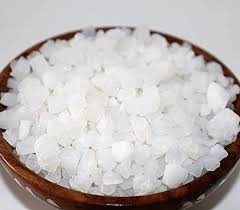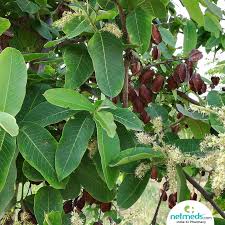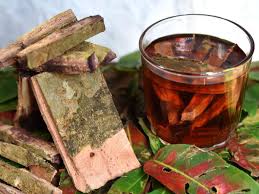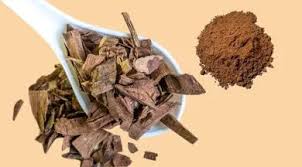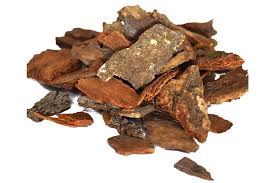
How to Grow Jamun Trees for Fresh Seeds at Home
The Jamun tree (Syzygium cumini), also known as Indian Blackberry, is a sacred and medicinal tree deeply rooted in Indian tradition and Ayurvedic medicine. From its juicy purple fruit to its therapeutic seed known as Jamun Guthli, every part of the tree holds value. If you’ve ever wanted fresh, organic Jamun seeds for your jadi buti remedies or simply enjoy growing your own fruit trees, cultivating a Jamun tree at home can be a highly rewarding experience.
At dirghaanshi, we promote self-reliance through natural wellness, and what better way to do that than to grow your own Jamun tree? In this guide, we’ll take you step-by-step through how to grow a Jamun tree at home—from seed preparation to care, maintenance, harvesting, and seed preservation—so you can enjoy the benefits of fresh Jamun Guthli directly from your backyard or balcony.
Long Description: Step-by-Step Guide to Growing Jamun Trees at Home
- Why Grow a Jamun Tree at Home?
Before diving into the process, let’s understand the many benefits of having a Jamun tree in your home garden:
Fresh fruit for direct consumption
Access to fresh Jamun Guthli for Ayurvedic remedies
A natural shade-giving tree with aesthetic appeal
Helps in improving air quality and soil health
Adds value to your herbal wellness journey with self-grown jadi buti
- Understanding the Jamun Tree
Jamun is a fast-growing tropical evergreen tree that belongs to the Myrtaceae family. Native to India, it thrives in warm and humid conditions.
Botanical Name: Syzygium cumini
Common Names: Jamun, Java plum, Black plum, Nerale Hannu
Climate Suitability: Tropical to subtropical
Height: Can grow up to 30–40 feet (but manageable in pots for 5–10 feet)
Lifespan: Over 50 years
- Choosing Between Seed and Sapling
There are two common ways to grow Jamun trees:
a) From Seeds (Jamun Guthli)
Best for organic, chemical-free growth
Slower initial growth (germination takes 2–3 weeks)
Fruit-bearing in 6–8 years
b) From Nursery Saplings
Fast-track option (fruiting in 3–5 years)
Higher cost but easier for beginners
Available in dwarf and hybrid varieties
- How to Grow Jamun Tree from Seeds
Let’s focus on growing Jamun trees from seeds, as this method is ideal for obtaining fresh, potent Jamun Guthli for dirghaanshi-style home wellness.
Step 1: Collecting and Preparing Seeds
Use ripe Jamun fruits from the local market or your own tree
Eat or scoop out the pulp, wash the seed
Let it dry in shade for 1–2 days
Crack the outer hard shell lightly to speed up germination (optional)
Step 2: Germination Process
Take a small pot with drainage holes
Fill with a mix of garden soil + compost + sand (40:40:20)
Sow the seed ½ inch deep into the soil
Water lightly and cover with a damp cloth or plastic wrap
Keep in partial sunlight
Germination Time: 10 to 20 days
Tip: Don’t overwater. Keep soil moist, not soggy.
Step 3: Transplanting Seedlings
Once the seedling reaches 4–6 inches in height:
Choose a larger pot (10–15 inches deep) or a garden spot with ample sunlight
Transplant carefully without disturbing the roots
Water regularly and feed with organic compost every 2–3 weeks
- Ideal Growing Conditions
Soil
Well-drained, loamy soil with organic matter
pH: Slightly acidic to neutral (6.0–7.5)
Sunlight
Full sun (minimum 5–6 hours of direct sunlight daily)
Watering
Water moderately
Avoid waterlogging
Increase watering frequency in summer
Fertilization
Use vermicompost, cow dung, or neem cake powder every month
Add phosphorus-rich fertilizer (bone meal) during flowering season
- Growing Jamun Tree in Pots or Balcony Gardens
If you don’t have a garden, you can still grow Jamun trees in large pots or containers.
Container Tips:
Minimum 15–20-inch deep pot
Use lightweight potting mix to reduce root rot
Add gravel at the bottom for drainage
Pruning Tip:
Regular pruning helps keep the tree compact
Trim lower branches and maintain one main trunk
- Flowering and Fruit Development
Jamun trees start flowering after 3–5 years (from saplings)
Flowering season: March to April
Fruit harvesting: May to July
Once the fruits ripen, collect them, remove the pulp, and air-dry the seeds (Guthli) for later use.
- How to Store and Use Fresh Jamun Seeds (Guthli)
After harvesting:
Wash seeds to remove remaining pulp
Dry in shade for 4–5 days
Store in airtight glass jars or cotton cloth pouches
Crush into powder when needed for health remedies like:
Diabetes management
Acne treatment
Digestive support
Blood purification
- Common Pests and Natural Remedies
Jamun trees are generally hardy but may occasionally attract:
Aphids
Mealybugs
Leaf spot fungus
Natural Solutions:
Neem oil spray
Garlic-chili organic pesticide
Cow urine-based plant tonic (Gomutra)
Regular cleaning of leaves and pruning ensures plant health.
- Seasonal Care and Tips
Season Care Tips
Summer Frequent watering, mulching to retain moisture
Monsoon Avoid overwatering, check for fungal infections
Winter Reduce watering, protect young plants from frost
Spring Fertilize and prune for new growth - Benefits of Growing Jamun Trees at Home
Self-sufficiency in jadi buti production
Save cost on store-bought herbal ingredients
Organic and pesticide-free health resources
Adds greenery, oxygen, and biodiversity to your space
A long-term investment in natural wellness
- Cultural and Spiritual Significance
In Indian traditions, Jamun trees are:
Considered sacred and are planted near temples
Associated with Lord Krishna and Lord Rama
Used in Ayurvedic rituals and healing ceremonies
By planting a Jamun tree, you connect not just with nature but with India’s spiritual roots.
Conclusion
Growing your own Jamun tree at home is a beautiful way to connect with nature, support your health, and embrace the philosophy of self-reliant living through Ayurveda. With the right care and patience, you’ll soon enjoy seasonal fruits, fresh Jamun Guthli for natural remedies, and a thriving green companion that benefits generations.
At dirghaanshi, we encourage every household to bring back the magic of jadi buti cultivation, starting with simple, medicinal trees like Jamun. Whether you live in an apartment or have a full garden, you can grow this tree and unlock its healing potential—naturally and traditionally.







